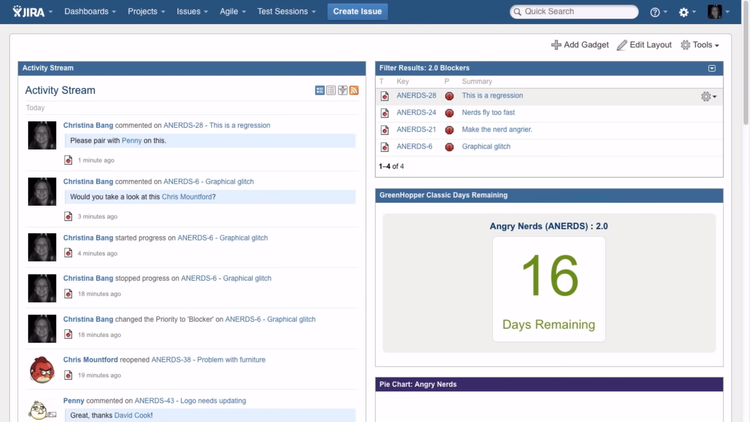The 5 Best Project Management Software
Project management software coordinates the execution of project tasks, including planning, scheduling, resource allocation, quality management, time tracking, and collaborative document sharing.





Project management is a necessary part of every business. Software is one way to streamline operations. There are countless options available --so which is right for your business? It all depends on what exactly your projects need. Do you have to coordinate teamwork between remote workers? Determine a budget before you can send invoices to clients? Organize a production schedule?
To help you find the best project management solution for your business, review our collection of best project management software products.
ProjectManager.com is a comprehensive project management software which acts as a central hub for work, planning, and achieving. Project Manager.com integrates with over 1,000 business apps such as Slack, Dropbox, Salesforce, and more, all to help your business create a fully-integrated work environment.
Smartsheet is a work execution platform which increases the speed of your company so you can make better business decisions faster. Use this project management software to configure, adapt, and improve work processes. Speed up execution of repetitive tasks while keeping teams engaged by using Smartsheet.
Monday.com lets you plan, organize, and track in one visual space. The project management platform lets you create a custom workflow so any team in your company can work on what they need the way that is easiest for them. Through Monday.com, you can create dashboards to gain insights into your company and track progress of work in process.
Project Insight is award-winning work & project management software that centralizes all of your work, tasks, and projects into one easy to use online platform. There is a completely FREE expandable version or a full-featured enterprise edition.
Project Insight’s out of the box integrations, REST API, and automation capabilities allow you to manage ALL of your projects, portfolios, and work systems in one place! Project Insight aggregates work from your CRM, Finance, Development, Support, Warehouse, and HR software.
Wrike is an online project management solution. This software offers a number of features to help with project planning, reporting project status in real-time, collaboration, and workflow management. Additionally, Wrike offers a free plan for 5 users with limited functionality. This plan is best for small teams with simple task lists. Plans for small to large businesses are also available.
Zoho Projects is a cloud-based project management tool that plans, tracks, and collaborates your work with your team–from any place, with any device. From scheduling mishaps to conflicting ideas, this software ensures you can break down your projects into manageable parts–such as tasks and subtasks.
Features include start and end dates, create custom fields, sequences and dependencies, and project tracking via milestones. Timesheets lets you log work hours, and invoices can be generated so you can monitor project expenses. Pricing starts at $3 per user per month.
What is Project Management Software?
Project management software coordinates and streamlines the execution of project tasks, including planning, scheduling, resource allocation, quality management, time tracking, and collaborative document sharing. Also known as PM software, these solutions help project managers across every industry, from software development to construction, to increase customer satisfaction through decreased project cycle times and better deadline projection accuracy.
The project management methodologies behind this software will improve labor and equipment utilization through better workflow scheduling and overall help your team collaborate better. This includes outlining tasks to be completed, the order they should be done, what resources are required, how they will be distributed, and how long the varying tasks will take.
Once a project management workflow is implemented into your business, you’ll see reduced instances of rework based on better collaboration between team members and external project stakeholders. This will lead to better customer retention through more reliable achievement of quality standards.
The best project management software includes features such as progress visibility, tools for promoting collaboration and creativity, all to increase efficiency executing project work. Complex project management systems can generally be broken down into three main functional areas: project planning, project tracking, and team collaboration. Knowing what your business needs more of can help you to choose the top project management software that is right for your business.
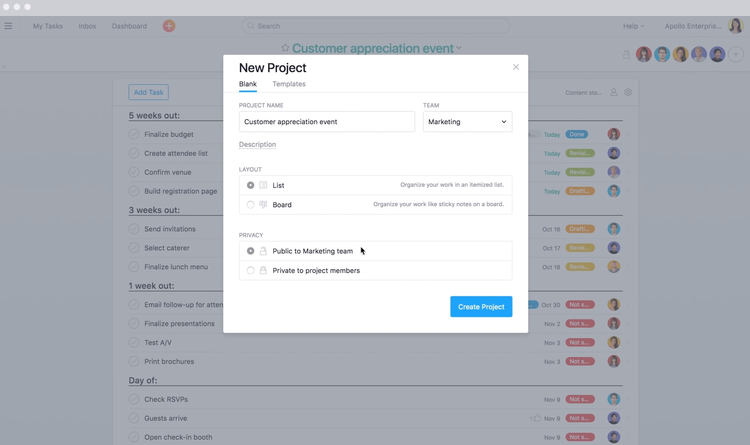
Project Management Features
- Project Planning and Scheduling: Design policies and methods to achieve project lifecycle objectives. Assign tasks to complete projects by allocating resources within a set timeframe shown in a custom calendar view.
- Team Collaboration: Allow two or more users to collaborate on the same project–seeing updates and edits to files in real-time. Coordinate between tasks and subtasks.
- Time Tracking: Track hours spent on individual tasks and the project as a whole with custom timesheets. Monitor billable vs non-billable hours for improved budgeting.
- Reporting: Create summary overviews of the current status of a project viewable by the entire team or select members. Custom reports cover status, risk, variance, and boards like Gantt charts and PERT charts.
- Budgeting: Estimate the total cost of a project. Account for labor, material procurement, and operating costs.
- Billing and Invoicing: Prepare and send out client invoices, maintain cash flow, and measure the profitability of projects through planning, execution, and analysis.
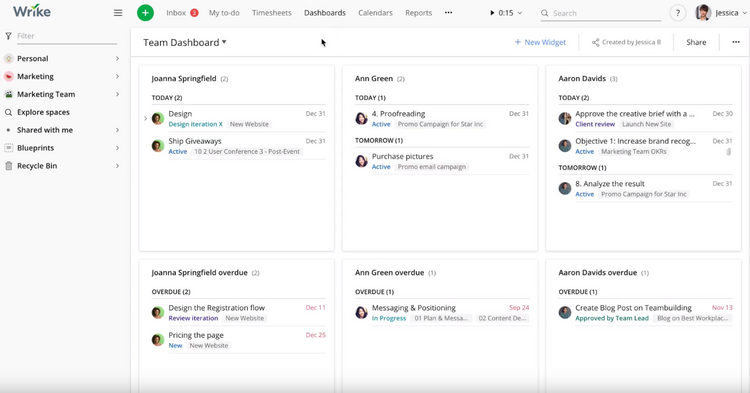
Best Project Management Software Benefits
For a long time, project managers had to rely on handmade boards or Excel spreadsheets to organize projects. Modern project management software improves your resource management–allowing you to become a more agile business through layers of customizable features. They also allow you to increase the number of projects your business can handle on a daily basis. Some of the other top benefits of project management software include:
Prepare Better with Project Planning
Project planning helps answer critical questions about the scope of the project, the people involved, and what the end results should look like. Tactical project management tools–such as those that address task management and scheduling–are derived from the answers we get from these strategic project planning tools.
Agile project planning tools transform production schedules into hyper-granular Gantt charts, an improvement from sharing data through individual email accounts and desktop file structures. Some other ways project planning can help improve your project management process includes:
- Project ideation: Capture project ideas and prioritize the tasks necessary to achieve them. Utilize tools like survey and interview capture programs to tap employee insights regarding business areas that can be improved. Polling and rating functionalities found in prioritization dashboards can provide a means of managing which projects deserve attention.
- Project scope: Outline a detailed plan for your project. Use collaboration tools, form-based project templates, and access to scope statements from previous projects better provide assistance to project authors. Entity relationship diagrams, SWOT analysis, Venn diagrams, and a variety of other project modeling tools can be useful in the planning work that precedes project scope documentation.
- Work breakdown structures: Custom fields provide a complete inventory of the work necessary to successfully complete a project. Commonly represented in a flow-chart like format, drag-and-drop functionality makes rearranging tasks easy.
- Project team rosters: Track project team member skills and certifications to provide an appropriate level of access to documents and utilities within the software, often on a project-by-project basis.
- Project budgeting: Determine an accurate budget through estimating, line-item cost breakdown assignments, what-if scenario forecasting, and actual cost variance comparison tools.
- Change management: Manage change orders through a structured approval process to ensure that the changes support the interests of the project stakeholders.
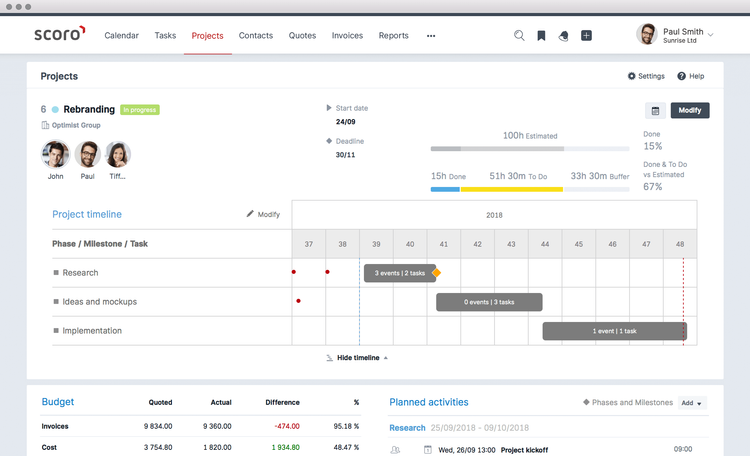
Manage Task Assignments and Scheduling
Keeping projects on track and productive helps your organization to answer critical questions, such as who is responsible for certain jobs, by assigning varying tasks along a schedule with clearly identified deadlines. There are a variety of different scheduling models and approaches found in project management software, ranging from general check-lists to advanced “to-do” style task registers.
The ability to filter tasks based on employee assignment, attributes, and timeframe is an important basic feature for keeping up with scheduling when there are a large number of tasks present. Similarly, many systems incorporate rule-based alert notifications related to upcoming tasks, task completions, or other indicators.
Some other common benefits involved with task assignments and scheduling include:
- Gantt charts: Provide a means of viewing the dependencies between tasks. Help visually represent the connections between what must be completed first. Also track the completion of specific project milestones and sprints.
- Progress tracking: Quickly identify where a project is relative to scheduled completion. Task completion dashboards display a percentage to completion, as well as provide filtering capabilities to identify what work remains.
- Time tracking: Track time inputs on various projects for billing purposes, such as timesheets for employee hours. For internal tracking purposes, monitor project completion and identify how long tasks will take on future projects.
- Resource allocation: View resource (labor and equipment) availability. Connect with your scheduling functionality and mirror labor scheduling in terms of the usage of resource registers and availability schedules.
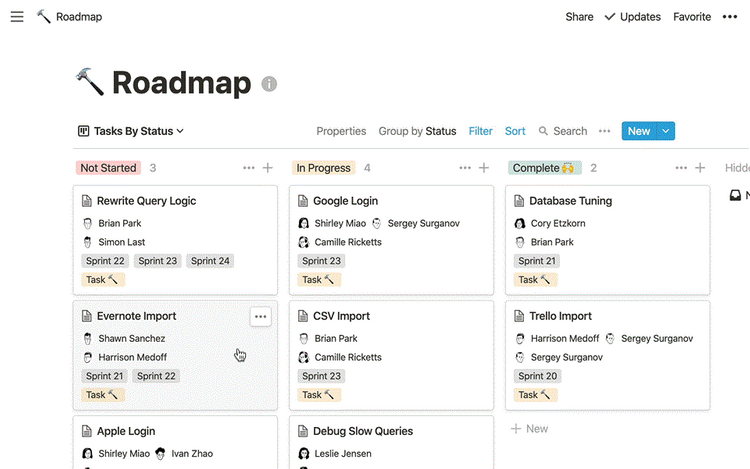
Foster Collaboration with Communication Tools
Collaboration features manage the interchange of ideas and documents to encourage teamwork. To ensure project members are working on common resources while maintaining transparency and accountability, you’ll need to ensure you’re using an online project management software that allows for easy sharing.
Due to an increase in distributed workforces and remote teams, your organization may need a unique way to manage communication with business partners or inter-departmentally among employees. It can be challenging for project members, especially those contributing to multiple projects, to keep others up to date on their progress when not sharing a workspace.
Most task management software will be able to handle collaboration features such as project communication, document management, and even meeting facilitation.
- Mobile apps: Access project information anywhere with iOS and Android compatible project management apps.
- Email integration: Handle emails from within their standard email clients (such as Outlook or Gmail), while capturing email communication so materials can be viewed from within the project management suite.
- Message boards, wiki’s, and instant messaging: Capture documentation that needs to be referenced frequently or continually updated. Promote more interaction and allow project members to rapidly communicate on a direct basis.
- Meeting coordination: Enterprise class project management solutions are increasingly providing meeting tools. Web-conferencing, audio-conferencing, and screen-sharing technologies are appearing more frequently in the more capable solutions available.
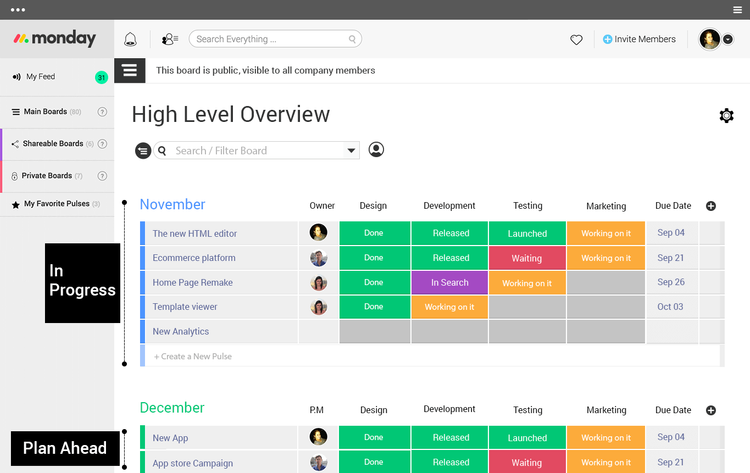
Better Control of Your Document Management
Project work involves the creation of a large amount of documents. Managing every document exchange via email or 3rd party file-sharing sites can always present some issues for your company:
- Sharing with multiple users makes it difficult to stay abreast of current versions
- Doesn’t allow for clear visibility into version histories
- It’s a time-consuming method of passing documents between project members.
Sharing project documents over Google Drive may work for small businesses and startups, but document management functionality within a project management system offers a host of advantages to more established companies. This includes multiple file format support, audit trails identifying change histories, editing permissions, and managed shared access to common documents.
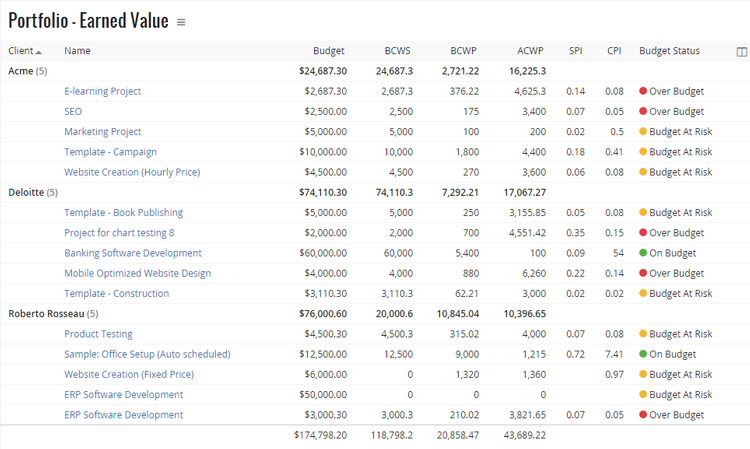
Types of Project Management Methods
Project managers across every industry have developed countless unique styles of project management to suit their immediate needs. However, in order to establish familiarity with their teams, most start out with some of the most popular project management methods, including:
Project management software includes the tools necessary to incorporate one or more of these popular methodologies into your system.
Types of Project Views
Flexible project views can help ensure your project management software presents information to you in a manner that is easy to digest in a highly visual manner. The most popular types of project views to track progress include:
Gantt Charts
A Gantt chart is a bar chart that shows project schedules and their overlapping relationships between activities. This visual view of project tasks lets you and your staff see what work is scheduled at varying times of the day, later in the week, or beyond. It’s best used to discover which employees are available to complete tasks in order to avoid interruption to their project workflow.
Gantt charts show start and end dates, details about the tasks that need to be completed, the length of each task, and who has been assigned the task. Gantt chart capabilities help aid in project planning through creating tasks dependencies, adding checkpoints or milestones along the way, or showing management which employees are completing their tasks on time.
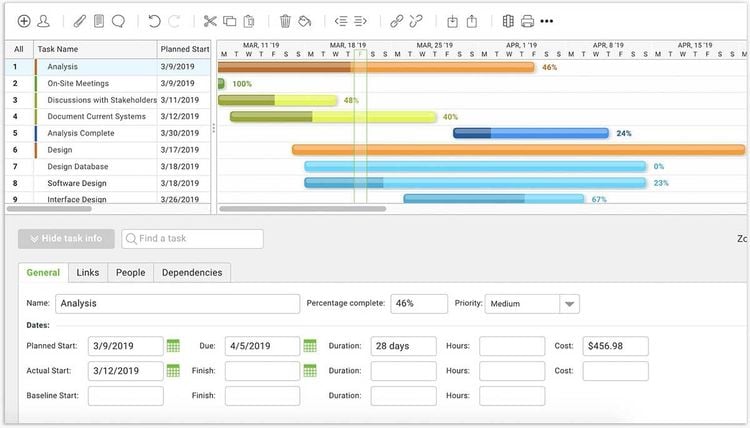
Task Lists
Tasks lists are sortable fields (similar to your common spreadsheet) that have rows and columns for employees, tasks, due dates, progress, priority levels, and more. Task lists can be thought of as to-do lists that can be assigned to your staff to ensure the project is completed on-time.
Task lists are best used by teams that are handling small projects with limited scopes. They are a definite improvement over manual methods (such as Excel spreadsheets) due to providing automation and the avoidance of human error. Tasks lists are found in almost all project management software, and sometimes can be sold as a stand-alone solution.
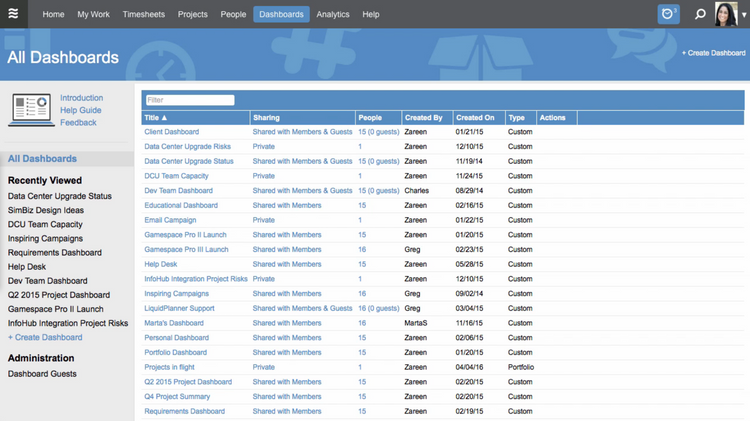
Kanban Boards
A Kanban board is another way to visualize project tasks through cards and columns. Each card or column represents a different stage of the project, providing an easy way to visualize work to be complete alongside all work-in-progress. Kanban itself is a lean method of managing work through the use of human systems, with the goal of avoiding bottlenecks.
Kanban boards can be broken down to show work-in-progress limits, commitment points, and delivery points. The cards are where teams can write their work, tasks, and create their overall project workflow. From there, each card will be arranged into workflows (columns) which lay an intuitive path to completion. Kanban boards will let you establish work-in-progress limits which is simply a cap to how many cards can be in one column at a given time.
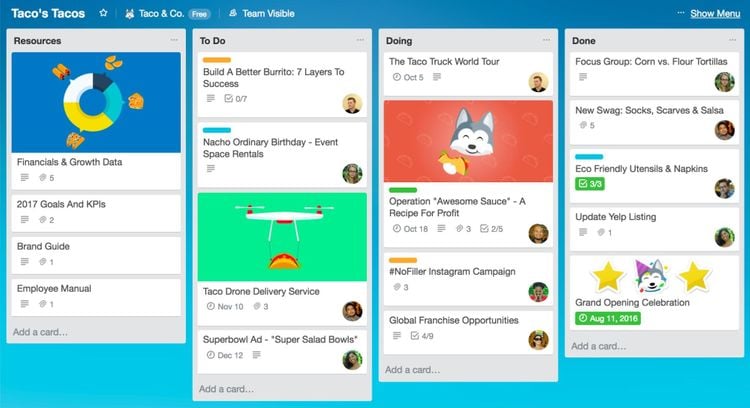
Project Management Software Pricing
Adding new software to your operations has to be worthwhile. How much you’ll pay for project management software will depend on:
- The number of functionalities needed
- The number of users
- The scope of your business
A freelancer or someone looking for a project management system for personal use will pay far less than a large team looking to manage multiple projects simultaneously. Small teams will need to find a solution somewhere in between. This indicates that project management solutions will vary drastically in price–meaning there are options for all sizes of businesses. The cost may increase based on whether you want additional access through mobile apps.
The cost of project management software starts at $10 per user per month to $75 per user per month. Many solutions will offer free trials to let you determine which level you need. Some development companies also offer a forever free version of their project management software. These free plans can be used indefinitely, but are usually stripped-down versions of their paid counterparts. This means you are usually limited to the number of users and projects that can be used in the system while paid plans offer unlimited projects.
